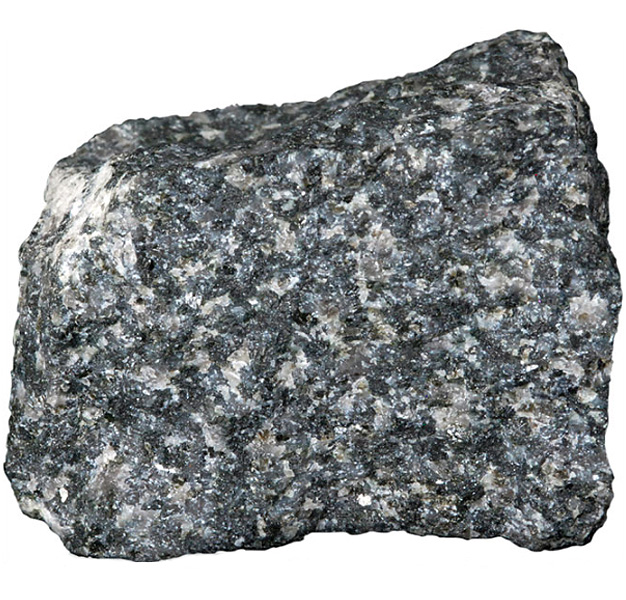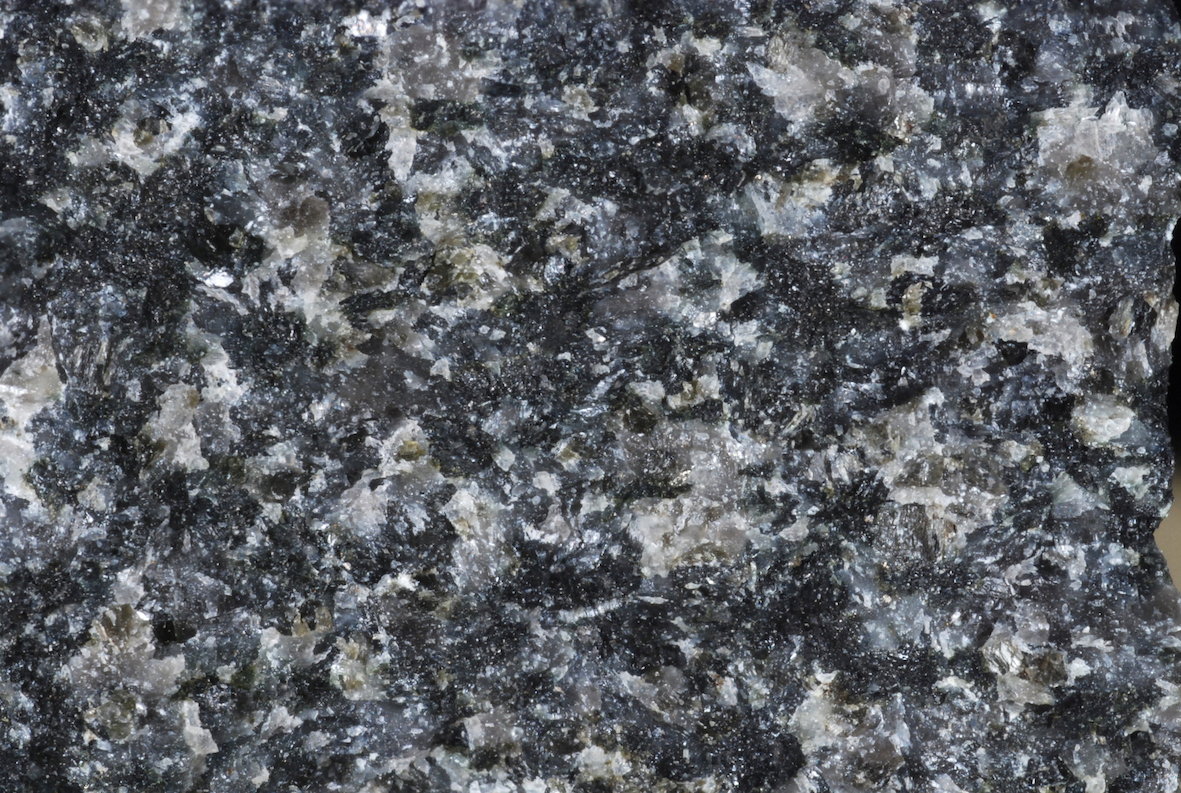
Fact sheet
This coarse-grained olivine gabbro sample comes from one of several large basic intrusions in NE Scotland that were intruded during the Grampian orogeny. The sample was collected from the Bin quarry, Huntly, Aberdeenshire, where the intrusion displays overturned cumulate layering with compositions varying from gabbro to troctolite. The variation in composition of the gabbro at this locality reflects processes such as fractional crystallisation and contamination by the surrounding Dalradian metasediments. The rock is a plagioclase-olivine-augite cumulate gabbro and this example is about 489 million years old.
In thin section the large olivine grains exhibit black alteration minerals, such as hematite, along internal cracks, and dominantly green-coloured chlorite alteration at the grain margins. The pyroxene is also cracked but exhibits well-defined cleavage with some grains showing two cleavages at the characteristic 90 degree separation. Plagioclase feldspar crystals have an aligned cumulate texture and exhibit strong lamellar twinning.
The United Kingdom Virtual Microscope (UKVM) collection consists of igneous, sedimentary and metamorphic rocks from around the UK.
It is intended as a teaching resource, helping to tell the story of the common rock types and how they form, and reflecting the history of the UK at the margins of the continent of Europe. The collection is a series of teaching sets, for example igneous rocks from the North Atlantic Igneous Province and SW England; high-temperature metamorphic rocks from Scotland and low-temperature metamorphic rocks from Wales; and sedimentary rocks, including English limestones and sandstones.







